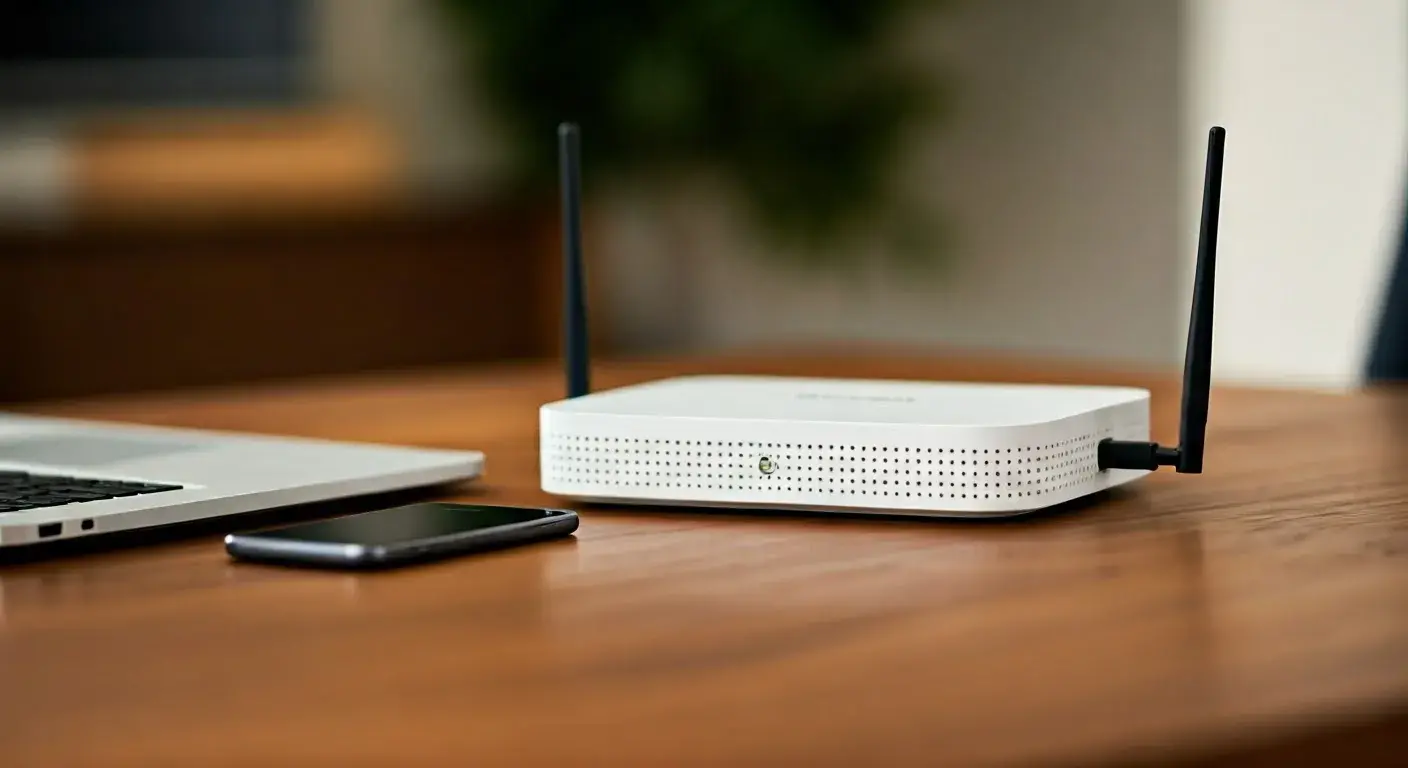Is Spectrum Internet Down in My Area?

Experiencing a Spectrum internet outage? This guide provides immediate steps to check if Spectrum internet is down in your specific area, troubleshoot common issues, and understand potential causes, ensuring you get back online swiftly.
Spectrum Outage Checker: Your First Step
When your Spectrum internet connection suddenly drops, the first and most crucial step is to determine if it's a localized issue or a widespread outage affecting your neighborhood or region. Spectrum provides several official channels to help you quickly ascertain the status of their service in your area. Understanding these tools can save you valuable time and frustration.
Using the Official Spectrum Outage Map and Status Page
Spectrum's primary resource for real-time outage information is their official website. While they may not always have a dedicated, publicly accessible "outage map" in the same vein as some other providers, they do offer status updates and a way to report and check for known issues. As of 2025, the most reliable method involves logging into your Spectrum account or using their mobile app.
- Spectrum Website: Navigate to the Spectrum support section. Often, there's a dedicated page for service status or outage reporting. You might need to log in to your account to see personalized information relevant to your service address. This is crucial because outages can be very localized.
- Spectrum Mobile App: If you have the Spectrum app installed on your smartphone or tablet, it's often the quickest way to get information. The app typically features a "Service Status" or "Outage" section that will alert you to any known disruptions affecting your home. It can also be used to report an issue.
- Customer Support Phone Line: If online methods are inaccessible due to the outage itself or if you prefer speaking with a representative, calling Spectrum's customer service is a direct route. Be prepared for potentially longer wait times during widespread outages. The number is typically found on your bill or the Spectrum website.
Third-Party Outage Reporting Websites
Beyond Spectrum's official channels, several independent websites aggregate user-reported outages. While not as definitive as official sources, they can provide a broader picture, especially if Spectrum's own systems are overwhelmed or slow to update. These sites rely on users like you to report when their service is down.
- DownDetector: This is one of the most popular platforms. Users report issues with various services, including internet providers like Spectrum. A spike in reports for Spectrum in your geographic area is a strong indicator of an outage. You can often see a map showing the density of reported issues.
- Outage.Report: Similar to DownDetector, this site collects user-submitted outage reports and displays them on a map. It's another valuable resource for cross-referencing information.
When using these third-party sites, look for a concentration of reports in your specific town or zip code. A single report might be an isolated issue, but multiple reports from the same vicinity strongly suggest a larger problem.
Understanding Outage Notifications
Spectrum may also proactively notify customers about planned maintenance or unexpected outages. These notifications can come via:
- Email: Check the inbox associated with your Spectrum account.
- Text Message: If you've opted in for SMS alerts, you might receive updates directly to your phone.
- Automated Phone Calls: Sometimes, Spectrum will use an automated system to inform customers in affected areas.
It's important to ensure your contact information is up-to-date in your Spectrum account to receive these important notifications.
Troubleshooting Spectrum Internet Issues
Before concluding that Spectrum internet is definitively down in your area, it's wise to perform some basic troubleshooting steps. Many internet problems are resolvable with simple actions that don't require Spectrum's intervention. These steps can help differentiate between a true service outage and a problem with your home network equipment.
Step-by-Step Troubleshooting Guide
Follow these steps systematically:
- Check Your Equipment Lights: Examine your Spectrum modem and router (if separate). Look for indicator lights. Typically, there are lights for power, internet connection (often labeled "Online," "Internet," or a globe icon), and Wi-Fi activity. If the "Online" or "Internet" light is off, blinking erratically, or red/orange, it often indicates a problem with the signal coming into your home. Consult your modem/router manual for the meaning of specific light patterns.
- Power Cycle Your Modem and Router: This is the most common and effective troubleshooting step.
- Unplug the power cord from both your Spectrum modem and your router.
- Wait for at least 30-60 seconds. This allows the devices to fully discharge and reset.
- Plug the modem back in first. Wait for its lights to stabilize (usually 1-2 minutes), indicating it has reconnected to Spectrum's network.
- Once the modem is fully back online, plug your router back in. Wait another 1-2 minutes for it to boot up and establish a connection with the modem.
- Try connecting to the internet again.
- Test with a Wired Connection: If you're primarily using Wi-Fi, try connecting a computer directly to your router (or modem if it's a combo unit) using an Ethernet cable. If the wired connection works but Wi-Fi doesn't, the issue is likely with your router's Wi-Fi settings or signal. If neither wired nor wireless works, the problem is more likely with the modem or the incoming service.
- Check Other Devices: If one device can't connect, try another. If all devices are offline, it reinforces the idea of a broader issue. If only one device is having trouble, the problem might be with that specific device's network settings.
- Bypass the Router (Advanced): If you have a separate modem and router, you can try connecting a computer directly to the modem via Ethernet. This helps isolate whether the router is the source of the problem. Remember to power cycle the modem after connecting directly.
- Check for Physical Cable Damage: Inspect the coaxial cable connecting your modem to the wall outlet and any Ethernet cables. Ensure they are securely connected and free from visible damage like kinks, cuts, or frayed ends.
When to Contact Spectrum Support
If you've gone through the troubleshooting steps above and still have no internet, or if your modem lights clearly indicate a service issue, it's time to contact Spectrum. Be ready to provide them with the results of your troubleshooting, including the status of your modem lights and whether you've tried power cycling.
Common Reasons for Spectrum Outages
Understanding why Spectrum internet might be down can help you anticipate potential issues and appreciate the complexities of maintaining a large network. Outages can stem from various sources, ranging from localized equipment failures to widespread environmental events.
Infrastructure and Equipment Failures
Like any complex technological system, Spectrum's network is susceptible to hardware malfunctions.
- Modem/Router Issues: While you can troubleshoot your own equipment, Spectrum also maintains network equipment at local nodes and central offices. These can fail due to age, power surges, or manufacturing defects.
- Fiber Optic Cable Damage: Spectrum heavily relies on fiber optic cables for high-speed data transmission. These cables can be damaged by construction accidents (e.g., digging), natural disasters (e.g., falling trees, earthquakes), or even rodent activity.
- Power Outages: Spectrum's network infrastructure requires electricity. If a local power grid experiences an outage, the Spectrum equipment in that area will also go down unless it has robust backup power systems.
- Overload/Capacity Issues: During peak usage times in densely populated areas, the network can sometimes become overloaded, leading to slowdowns or temporary disconnections. This is less of a true "outage" and more of a performance degradation, but it can feel like the internet is down.
External Factors and Environmental Events
The physical environment plays a significant role in internet service reliability.
- Severe Weather: High winds, heavy rain, snowstorms, ice, and lightning strikes can all disrupt Spectrum's services. This can be due to direct damage to infrastructure (e.g., downed poles, damaged cables) or indirect effects like power outages.
- Natural Disasters: Earthquakes, floods, hurricanes, and wildfires can cause widespread and prolonged outages by severely damaging network infrastructure over large areas.
- Accidental Damage: As mentioned, construction crews, vehicle accidents involving utility poles, or even vandalism can inadvertently sever cables or damage equipment.
Planned Maintenance and Upgrades
Sometimes, Spectrum will schedule maintenance or upgrades to improve their network. While these are typically communicated in advance, they can still result in temporary service interruptions.
- Network Upgrades: Spectrum continuously invests in upgrading its network to provide faster speeds and better reliability. These upgrades might require temporary shutdowns of specific network segments.
- Equipment Replacement: Old or failing equipment in their central offices or distribution points may need to be replaced, necessitating a brief service interruption.
Spectrum aims to schedule planned maintenance during off-peak hours to minimize disruption, but it's a necessary part of maintaining a modern network.
Spectrum-Specific Issues
Occasionally, issues might be specific to Spectrum's operational procedures or software.
- System Glitches: Like any large software-driven system, Spectrum's network management systems can experience glitches that may affect service.
- Billing or Account Issues: While not a true "outage," sometimes service can be temporarily suspended due to billing discrepancies or account issues. Ensure your account is in good standing.
By understanding these potential causes, you can better assess the situation when your Spectrum internet goes down and know what to expect regarding resolution times.
What to Do During a Spectrum Outage
When Spectrum internet is confirmed to be down in your area, and it's not a problem you can resolve with home troubleshooting, it's time to shift your focus from fixing the issue to managing the situation and staying informed. Here’s a breakdown of productive actions to take.
Stay Informed and Patient
The most important thing during an outage is to remain patient and stay informed through official channels. Widespread outages, especially those caused by severe weather or major infrastructure damage, can take time to repair.
- Monitor Official Spectrum Channels: Continue to check the Spectrum website, app, or social media for updates. They will typically provide estimated restoration times (ETRs) as they become available.
- Avoid Constant Reboots: Once an outage is confirmed, repeatedly power cycling your modem and router won't help and might even hinder the network's recovery if Spectrum is performing remote diagnostics or resets.
- Be Patient with Support: If you need to contact Spectrum support, understand that wait times can be exceptionally long during major outages. Use their online tools first if possible.
Utilize Alternative Communication Methods
Without home internet, you'll need other ways to communicate and stay connected.
- Mobile Data: If you have a smartphone with a cellular data plan, this is your primary lifeline. Use your mobile data for browsing, email, and essential communication. Be mindful of your data limits if you have a capped plan.
- Public Wi-Fi: Libraries, coffee shops, and community centers often offer free public Wi-Fi. This can be a good option for accessing information or getting work done if you can travel to one of these locations.
- Hotspot Functionality: Many smartphones allow you to create a personal Wi-Fi hotspot, sharing your cellular data connection with other devices like laptops or tablets. This is invaluable for maintaining productivity or entertainment during an outage.
Adapt Your Work and Entertainment
If your work or daily routine relies heavily on internet access, you'll need to adapt.
- Offline Tasks: Focus on tasks that don't require an internet connection. This could include reading, planning, or working on documents that can be saved locally.
- Download Content: If you anticipate potential outages, consider downloading movies, music, podcasts, or articles beforehand when your internet is working.
- Communicate Essential Information: If you need to inform others about your lack of internet (e.g., for work meetings), use your mobile phone or alternative methods.
Document the Outage (Optional but Recommended)
For your own records or if you plan to seek compensation (though this is rare for standard outages), you might want to document the event.
- Note the Time: Record when the outage began and when it was resolved.
- Keep Records of Communication: Save any emails, texts, or reference numbers from Spectrum support.
- Screenshot Error Messages: If you encounter specific error messages on your devices, take screenshots.
Prepare for Future Outages
Use the experience to prepare for potential future disruptions.
- Keep Contact Information Handy: Ensure you have Spectrum's customer service number and website saved somewhere accessible offline (e.g., a note in your phone's contacts, a written list).
- Invest in a Mobile Hotspot Device: If you live in an area prone to outages or rely heavily on internet, consider a dedicated mobile hotspot device for a more robust backup connection.
- Have a Backup Power Plan: For your modem and router, a UPS (Uninterruptible Power Supply) can keep them running for a short period during power outages, potentially allowing your Spectrum connection to remain active if the issue is only power-related and not network-wide.
By taking a proactive and adaptable approach, you can minimize the disruption caused by a Spectrum internet outage and get back online as smoothly as possible.
Preventing Future Spectrum Internet Problems
While you can't prevent all Spectrum internet outages, as many are due to external factors beyond your control, there are several proactive steps you can take to minimize the frequency and impact of issues within your home network and prepare for inevitable disruptions.
Optimizing Your Home Network Equipment
The performance and reliability of your internet connection often depend on the quality and configuration of your modem and router.
- Use Approved Equipment: Ensure your modem and router are on Spectrum's list of approved devices. Using outdated or incompatible equipment can lead to performance issues and connectivity problems. Spectrum often provides a modem, but if you own your own, verify compatibility.
- Regularly Update Router Firmware: Router manufacturers release firmware updates to fix bugs, improve security, and enhance performance. Check your router's administrative interface periodically (usually accessible via a web browser at an IP address like 192.168.1.1 or 192.168.0.1) for available updates.
- Position Your Router Wisely: For Wi-Fi performance, place your router in a central, open location, away from obstructions like thick walls, metal objects, and other electronic devices that can cause interference (e.g., microwaves, cordless phones). Elevating the router can also help.
- Secure Your Wi-Fi Network: Use a strong, unique password for your Wi-Fi network (WPA2 or WPA3 encryption). An unsecured network can be exploited by unauthorized users, consuming bandwidth and potentially slowing down your connection or even leading to security breaches.
- Consider a Mesh Wi-Fi System: For larger homes or areas with Wi-Fi dead spots, a mesh Wi-Fi system can provide more consistent coverage than a single router.
Maintaining Your Spectrum Service
Beyond your home network, ensure your Spectrum service itself is in optimal condition.
- Keep Account Information Updated: Ensure Spectrum has your correct contact information (email, phone number) so you receive important notifications about maintenance or outages.
- Monitor Your Data Usage: If you have a data cap (less common for fixed-line internet but can apply to mobile hotspots), monitor your usage to avoid exceeding limits, which can lead to throttling or extra charges.
- Pay Bills on Time: Ensure your account is always in good standing to avoid any unexpected service interruptions due to billing issues.
Preparing for Power Outages
Power outages are a common cause of internet disruption, even if the Spectrum network itself is functional.
- Use a UPS for Critical Equipment: Connect your Spectrum modem and router to an Uninterruptible Power Supply (UPS). A good UPS can keep these devices powered for a significant period (e.g., 30 minutes to several hours, depending on the UPS capacity and the devices' power draw), allowing you to stay online during short power flickers or outages.
- Have Backup Power Sources: Consider portable power banks for charging mobile devices or a small generator for extended power outages.
Proactive Communication and Planning
Being prepared mentally and having a plan can significantly reduce stress during an outage.
- Save Important Numbers Offline: Keep Spectrum's customer service number, your account number, and the website address written down or saved in your phone's offline contacts.
- Download Offline Resources: For critical work or entertainment, download necessary files, documents, or media when your internet is working.
- Establish Alternative Communication Methods: Ensure you have a reliable way to communicate if your home internet is down, such as a charged mobile phone with a data plan or access to public Wi-Fi.
- Understand Service Level Agreements (SLAs): While residential internet plans rarely have strict SLAs with guaranteed uptime, be aware of what Spectrum promises in their terms of service regarding reliability.
By implementing these preventative measures, you can significantly improve the stability and reliability of your Spectrum internet connection and be better prepared to handle any unexpected service disruptions.
Spectrum Service Alternatives
If you frequently experience Spectrum internet outages, or if their service doesn't meet your needs in terms of speed, reliability, or cost, exploring alternative internet providers in your area is a wise decision. The availability of these alternatives will vary significantly based on your specific location.
Types of Internet Service Providers
Understanding the different types of internet technologies available can help you choose the best fit.
- Cable Internet: Spectrum is a cable internet provider. Other cable companies may operate in your area, offering similar performance characteristics.
- Fiber Optic Internet: This is generally the fastest and most reliable type of internet. Fiber uses light signals transmitted through glass or plastic threads. Providers like AT&T Fiber, Verizon Fios, or Google Fiber (where available) offer this service. If fiber is available in your area, it's often the best option.
- DSL (Digital Subscriber Line): DSL uses existing telephone lines to provide internet access. It's typically slower than cable or fiber but can be a viable option in areas where other services are limited. Providers like AT&T or CenturyLink offer DSL.
- Satellite Internet: Services like Viasat or HughesNet provide internet via satellite dishes. This is often the only option in very rural or remote areas but typically comes with higher latency, lower speeds, and data caps compared to other options. Starlink, a satellite internet service from SpaceX, offers potentially higher speeds and lower latency than traditional satellite.
- Fixed Wireless Internet: This technology uses radio signals to transmit internet from a tower to a receiver at your home. It can be a good option in suburban or rural areas where laying cable is not feasible. Availability is highly localized.
- 5G Home Internet: Major mobile carriers like T-Mobile and Verizon are increasingly offering home internet services using their 5G cellular networks. These can offer competitive speeds and are often easier to set up than traditional wired services, but performance can vary based on signal strength and network congestion.
How to Find Alternatives in Your Area
The process of finding alternative providers involves research specific to your address.
- Use Online Comparison Tools: Websites like BroadbandNow, HighSpeedInternet.com, or Compare.com allow you to enter your zip code or address to see which providers and technologies are available to you. These tools often provide pricing, speed, and plan details.
- Check Major Provider Websites Directly: Visit the websites of major internet providers (e.g., AT&T, Verizon, Xfinity if not Spectrum, CenturyLink, T-Mobile Home Internet, Starlink) and use their address lookup tools.
- Ask Your Neighbors: Talking to your neighbors about what internet services they use and their satisfaction levels can provide valuable real-world insights.
- Consider Mobile Hotspot as a Backup: Even if you switch providers, maintaining a reliable mobile data plan or a dedicated hotspot device can serve as a crucial backup during any internet service disruptions.
Factors to Consider When Switching
When evaluating alternatives, think beyond just the advertised speed.
- Advertised vs. Actual Speeds: Speeds can vary. Look for reviews or ask about typical performance.
- Data Caps: Be aware of any data limits. Unlimited plans are generally preferred for heavy internet users.
- Contract Lengths and Fees: Understand the contract terms, early termination fees, and any installation or equipment rental costs.
- Customer Service Reputation: Research customer reviews regarding support quality and responsiveness.
- Reliability: This is paramount. If Spectrum is unreliable for you, prioritize providers known for consistent service in your area.
Switching providers can sometimes be a hassle, but if Spectrum's service is consistently problematic, exploring these alternatives is a necessary step to ensure you have the reliable internet connection you need.
Conclusion
When your Spectrum internet connection unexpectedly cuts out, the immediate question is, "Is Spectrum internet down in my area?" This guide has equipped you with the knowledge to quickly answer that by utilizing Spectrum's official outage checkers and reliable third-party reporting sites. We've also detailed essential troubleshooting steps you can perform yourself, from power cycling your modem and router to checking equipment lights and physical connections, helping you differentiate between a widespread outage and a localized issue.
Understanding the common culprits behind Spectrum outages—infrastructure failures, environmental factors, and planned maintenance—provides valuable context. During an outage, patience and staying informed through official channels are key, alongside leveraging alternative communication methods like mobile data or public Wi-Fi. Furthermore, proactive measures such as optimizing your home network, securing your Wi-Fi, and preparing for power disruptions can significantly mitigate future problems. Finally, if Spectrum's reliability remains a concern, we've outlined how to explore and evaluate alternative internet service providers in your area, ensuring you have the dependable connection you require for both work and leisure. Don't let internet downtime disrupt your life; be informed, be prepared, and act decisively.





